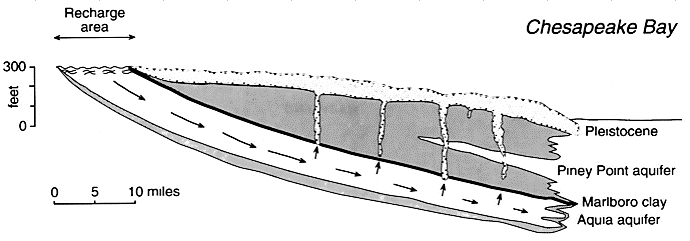

The schematic profile of the Aquia aquifer (Maryland, USA) shows a 30 m thick aquifer that
extends over 90 km from Washington to Chesapeake Bay. The aquifer is confined by clay layers
that were sliced by Pleistocene glaciers, creating an upward outlet for the groundwater.
As the result, fresh water started to infiltrate and displace the resident saline water,
and a chromatographic pattern developed. Chloride has been flushed already, but cations
that are displaced from exchange sites testify of the former, more saline water in the aquifer.
From the recharge along the flowpath, Ca(HCO3)2
water quality merges in chromatographic sequence into
Mg(HCO3)2,
KHCO3 and NaHCO3 water types.
The modeled pattern (lines in the graphs)
beautifully confirms the chromatographic origin of the water qualities.

Details of the model are in Appelo, 1994, Cation and proton exchange, pH variations, and carbonate reactions in a freshening aquifer, Water Resour. Res. 30, 2793-2805.